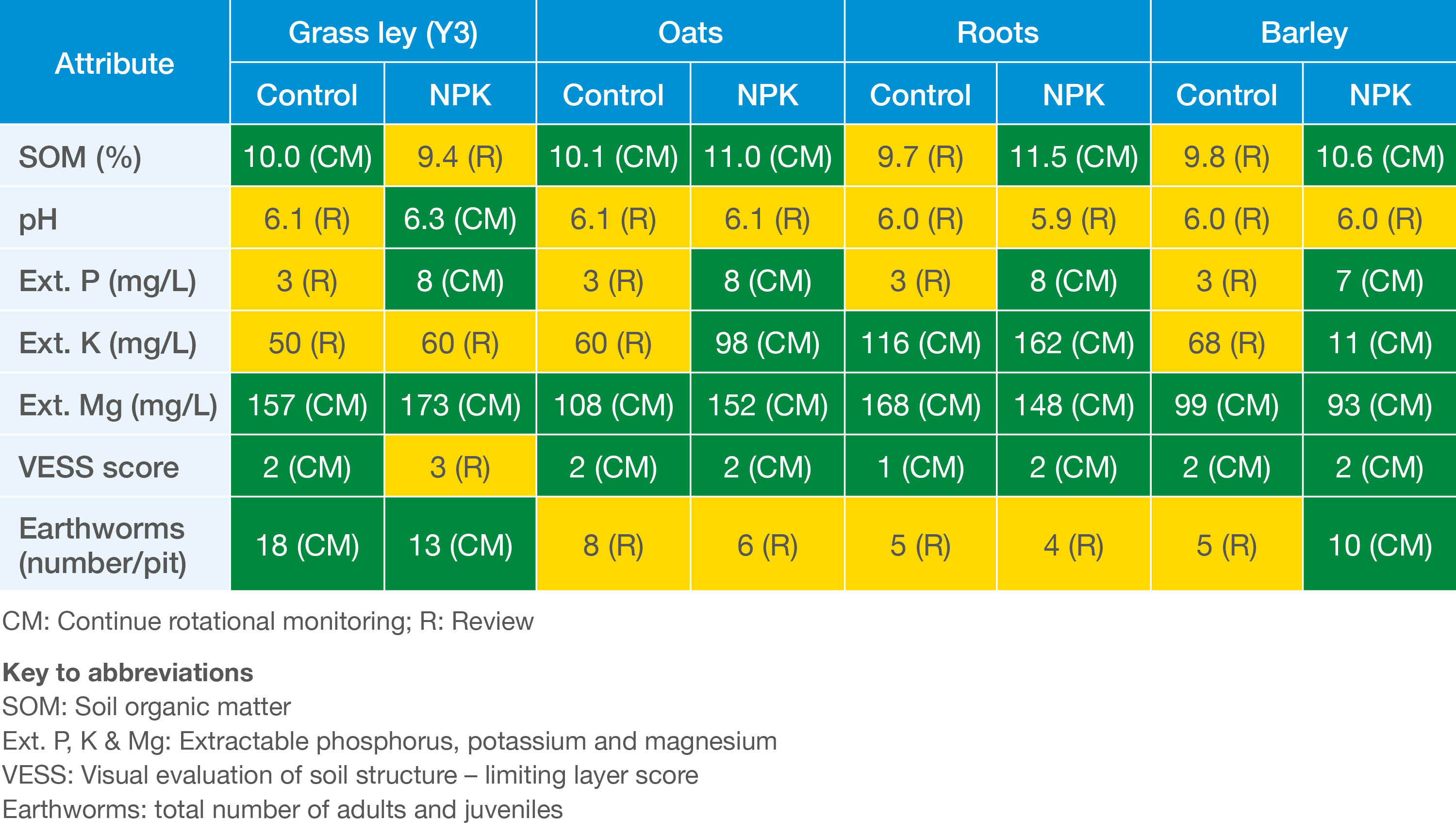- Home
- Knowledge library
- Testing the long-term effect of fertilisers on soil health
Testing the long-term effect of fertilisers on soil health
The use of fertilisers affects soil chemical (e.g. availability of nutrients) and biological (e.g. microbial activity) properties. The soil health scorecard has been tested at a long-term experimental site exploring this key driver of soil biology.
Assessing soil health using a scorecard approach
Soil health scorecard
The scorecard brings together information about soil chemical, physical and biological properties. The integrated report uses traffic light coding to identify those properties requiring further investigation to determine the management steps needed to minimise potential risks to crop productivity.
The use of fertilisers affects soil chemical (e.g. availability of nutrients) and biological (e.g. microbial activity) properties and thus soil health.
Long-term experiments at SRUC Craibstone
The long-term “Old Rotation” experiment in Woodlands Field at SRUC Craibstone near Aberdeen was established in 1922 and investigates the impact of six different fertiliser treatments on soil properties and crop performance of a six-course rotation. This comprises:
- Three-year grass/clover ley
- Spring oats
- Potatoes
- Spring barley (undersown with grass/clover)
Each crop in the rotation is present every year enabling a comparison of the response of all crop types within the same season. All treatments receive farmyard manure once every six years.
The other treatments are NPK (P as superphosphate), NPK (P as rock phosphate), NK, NP and PK, all at recommended rates for the relevant crop.
Testing the soil health scorecard at SRUC Craibstone
Measurements of topsoil chemical, physical and biological properties were made in October 2019 from four crops (third year ley, spring oats, potatoes and spring barley) in two fertiliser treatments (no mineral fertiliser, NPK with superphosphate).
Example soil health scorecard for Craibstone: effect of fertiliser (four crop types)

The results show that all fertilised and unfertilised crop types had soil properties that were scored good (green – no action needed) or moderate (amber – monitor) according to the soil health scoring system. No soil property scores were highlighted red – requiring investigation.
- P and K availability was not as good for the unfertilised crop types
- Mg availability scored similarly for the unfertilised and fertilised crop types
- Long-term fertilisation did not have an effect on soil pH
- There was marginally poorer soil structure on the fertilised grass ley
- Soil organic matter levels were highest for fertilised oats and roots
- Earthworm numbers were highest in the grass ley and lowest on the roots, probably reflecting the level of soil disturbance
- Higher yields were attained with fertiliser application compared to the unfertilised control, particularly for hay, with yield increases ranging from 1.2-2.5 times higher
Further information
Assessing soil health using a scorecard approach
The above video shows how the soil health scorecard was tested at long-term experimental sites
.jpg)
Topics:
Sectors:
Tags:

